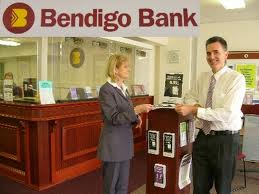Community Banking
 |
The formation of Community Banks is the initiative of the Bendigo Bank that had its origins during the Victorian gold rush of the mid-1850s. Our recent guest speaker, Shane Pappas, is passionate about the value of establishing a community bank within the community and he outlined to us, all the good reasons for doing so. |
Bendigo Bank was originally established as the Bendigo Permanent Land and Building Society. It became a fully-fledged bank in 1995, and now operates over 260 branches throughout Victoria and interstate, with outlets in each of the mainland state capitals.
Shane, who is an engineer specialising in medical equipment and processes, is voluntarily pursuing the formation of a West Hawthorn community bank, addressing meetings, handing out flyers at the supermarket each week and is also secretary of the steering committee. He is looking to reach a goal of pledges in the order of $700,000, to get the proposal off the ground. To the present, almost a figure of $400,000 has been reached.
Bendigo Bank provides the banking licence, the bank brand, product development, systems, acquisition of requisite service support, and supports the branch with operational requirements including marketing support, training, stationery, statements and administration.
Whilst the country banking crisis prompted the venture, today only 36% of the now 230 community banks are in country regions. It has become very attractive in city suburban locations as they provide communities with more than just quality banking services – they deliver employment opportunities for local people, keep local capital in the community, are a local investment option for shareholders and provide a source of revenue for important community projects determined by the local community.
The community must first set up a steering committee, then seek pledges to allow the company to be formed. After about $700,000 to $900,000 has been pledged, the Bendigo Bank carries out a feasibility study. If it is successful, the committee has to find a premises and issue a prospectus to raise the capital to start the company. Shareholders from the community can invest $500 to $10,000 each that will entitle them to just one vote each. Shareholders elect the Board and the bank is opened.
Staff, as far as possible, are drawn from the community but work under the conditions and administration of the Bendigo Bank, including the use of internet banking. Profits are shared on a 50/50 basis with the Bendigo Bank. The 50% retained by the company can then be determined by the Board for return to the shareholders, reinvestment and for needs within the community.
Shane spoke of the Scout group he runs, receiving a grant from the East Kew branch that enabled them to bring their rundown hall into tip-top condition for use by young people. All branches of community banks are supporting similar community projects and working with other groups such as Rotary to meet community needs.
Judging by the few comments from members who have already invested in community banks, all the stated aims for their establishment are being well and truly met.
As well as considering the proposition of investment, we should keep in mind that, as a club, we may, at some time, be able to take part in a community bank funded community service project.